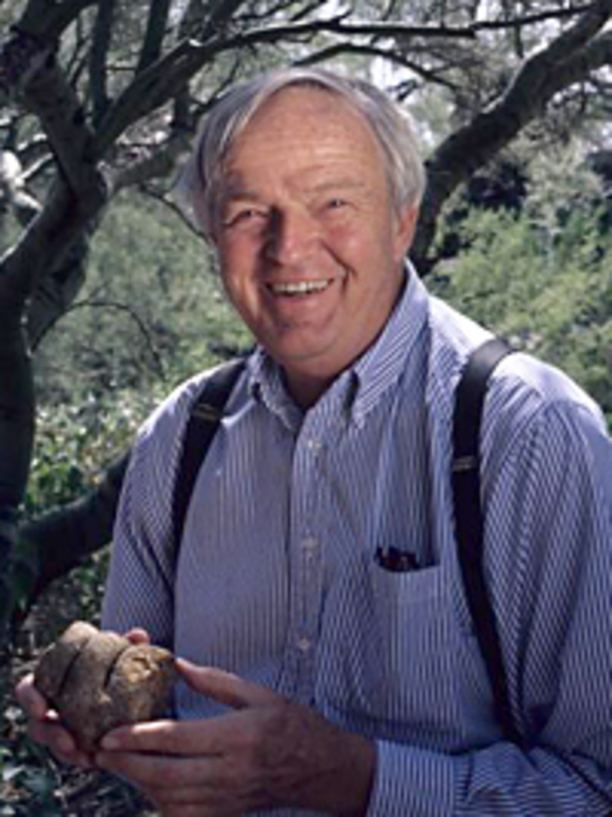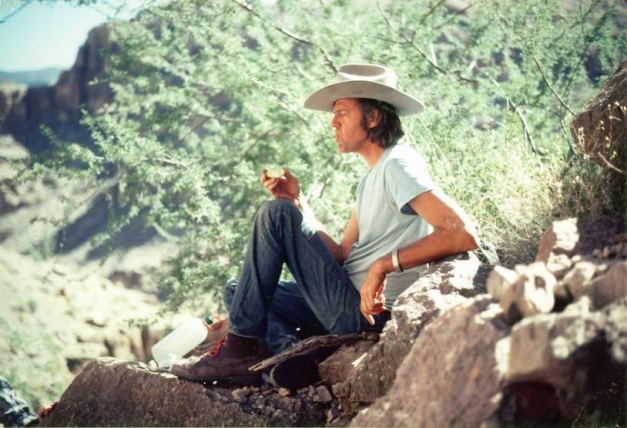Name Paul Martin | ||
 | ||
Died September 13, 2010, Tucson, Arizona, United States Education University of Michigan (1956), Cornell University Awards Guggenheim Fellowship for Natural Sciences, US & Canada Books Twilight of the Mammoths, Quaternary Extinctions, Turkey Foot Ridge site, The last 10 - 000 years, Indians Before Columbus | ||
Paul s martin pleistocene ecologist 1928 2010
Paul S. Martin (born in Allentown, Pennsylvania, 1928 - died in Tucson, Arizona September 13, 2010) was an American geoscientist at the University of Arizona who developed the theory that the Pleistocene extinction of large mammals worldwide was caused by overhunting by humans. Martin's work bridged the fields of ecology, anthropology, geosciences, and paleontology.
Contents

In 1953, Martin received his bachelor's degree in zoology from Cornell University. In 1953 and 1956 he completed his master's and doctorate programs at the University of Michigan and then proceeded with postdoctoral research at the Yale University and the University of Montreal. He joined the faculty of the University of Arizona in 1957 and worked there until his retirement in 1989. A case of polio, contracted while doing undergraduate field work in Mexico, forced Martin to rely on a cane, which restricted but did not end his field work.
Overkill hypothesis
Martin developed the theory known as “overkill” or the “blitzkrieg model” based on the ideas of a Russian climatologist Mikhaill I. Budyko about the sudden demise of large Ice Age mammal populations on different continents and at different times coincided with the arrival of humans. He believed that as they migrated from Africa and Eurasia to Australia, the Americas, and the islands of the Pacific, humans rapidly hunted the large animals endemic to each continent to extinction. Martin particularly focused his research on North America, whose late Ice Age fauna rivaled that of Africa today., but the ideas was first developed by M. Budyko to explain Mammoth extinction in Europe and Asia. Because M.I. Budyko published his work in a Russian journal and during the cold war in 1967, most North American scholars ignored Budyko's paper.
There, he theorized, around 11,000 years ago, newly arriving humans hunted North America's Ice Age big game, including ground sloths, camels, mammoths and mastodons, to extinction. The theory, summarized in Twilight of the Mammoths: Ice Age Extinctions and the Rewilding of America (2005) has been widely discussed and remained controversial. Critic Michael Fosha wrote that although Martin attempted to discuss and debunk alternative explanations of the extinction, he did not adequately examine mainstream theories like changes in climate and vegetation. According to Fosha, Martin presented a vivid account of prehistoric people's assault on nature "with the efficiency of a German panzer division" but Fosha felt that his views on archaeology were inaccurate. However, Fosha wrote that the book presents "excellent data on the Southwest" and deserves serious attention for it.
Martin sometimes faced criticism from archaeologists and paleontologists who claimed earlier dates for human arrival in the Americas or later dates for certain extinct animals than the overkill theory would suggest. Martin maintained that such claims were the result of faulty scientific analysis and pointed out that no such dates had yet been independently verified.
Martin's over-hunting hypothesis is still controversial. Several pre-Clovis sites are accepted by most workers, such as Topper, Monte Verde, Paisley Caves and others; dating of these is still controversial. New research has shown that in Siberia mammoths lived together with human beings for around 30,000 years, yet they became extinct only when the last glacial age ended. In Madagascar there are more studies that predates the human arrival in the isle of several millennia. Martin's overkill model was nevertheless confirmed in New Zealand (with the demise of the Moa) and other smaller islands, with the extinction of many species like the Dodo and hundreds of insular other animals.
Rewilding
Martin also championed the concept of “rewilding”, or “resurrection ecology” in which extinct N. American Pleistocene fauna could be restored by establishing breeding populations of surviving animals from other continents (llamas, camels, lions and cheetahs) and introducing populations of animals analogous to extinct species, i.e., elephants for mammoths.
According to Vance Haynes, "unlike so many people who get infatuated with their own theories, he [Martin] spent his professional career inviting criticism. He put together two critical conferences about Pleistocene extinctions, and the volumes that came out of those were pace-setting."
